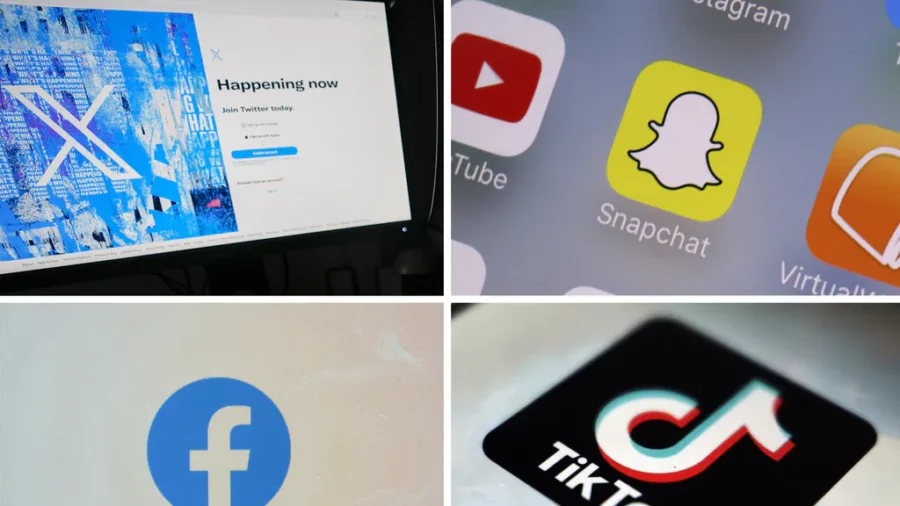Social media companies collectively made over $11 billion in U.S. advertising revenue from minors in 2022, according to a market model study from the Harvard T.H. Chan School of Public Health published on Wednesday.
Researchers said their results point to a need for greater transparency and better regulation, saying the platforms have failed to meaningfully self-regulate.
“The platforms’ reluctance to share data with researchers and journalists has been well-documented,” the researchers noted in their study.
Better regulation may also help alleviate harms to youth mental health and curtail potentially harmful advertising practices that target young children and teens, they said.
Given that the social media platforms have no legal obligation to make public how much money they earn from minors, the researchers based their study on estimates extrapolated from a number of private and government sources.
Population data from the U.S. Census and survey data from Common Sense Media and Pew Research allowed the researchers to estimate the number of minors on Facebook, Instagram, Snapchat, TikTok, Twitter (now called X), and YouTube in 2022. Each platform’s U.S. ad revenue from 2022, as well as the average time children spent per day on each platform, was estimated using data from research firm eMarketer, now called Insider Intelligence, and Qustodio, a parental control app.
Using a simulation model, these numbers then allowed the researchers to estimate how much revenue the platforms earned from ads targeting minors in the United States.
“Our finding that social media platforms generate substantial advertising revenue from youth highlights the need for greater data transparency as well as public health interventions and government regulations,” said lead author Amanda Raffoul, an instructor in pediatrics at Harvard Medical School.
The negative effects stemming from social media platforms, whose personally-tailored algorithms can drive children toward excessive use, have long faced criticism. This year, lawmakers in states like New York and Utah introduced or passed legislation that would curb social media use among kids, citing harms to youth mental health and other concerns.

Meta, which owns Instagram and Facebook, is also being sued by dozens of states over accusations of contributing to the mental health crisis.
“Although social media platforms may claim that they can self-regulate their practices to reduce the harms to young people, they have yet to do so,” said Bryn Austin, a professor at the Department of Social and Behavioral Sciences at Harvard and a senior author on the study.
“Our study suggests they have overwhelming financial incentives to continue to delay taking meaningful steps to protect children.”
Though social media platforms are not the first entities to advertise to children, online advertising is especially worrisome because ads can be targeted exclusively to children based on their user profile—which means the same ads will not show up on an adult’s user feed, thus remaining hidden from parental scrutiny.
Vulnerability of Youth
In a 2020 policy paper, the American Academy of Pediatrics warned that children are “uniquely vulnerable to the persuasive effects of advertising because of immature critical thinking skills and impulse inhibition.”
“School-aged children and teenagers may be able to recognize advertising but often are not able to resist it when it is embedded within trusted social networks, encouraged by celebrity influencers, or delivered next to personalized content,” the paper noted.
As concerns about social media and children’s mental health grow, the Federal Trade Commission earlier this month proposed sweeping changes to a decades-old law that regulates how online companies can track and advertise to children. The proposed changes include turning off targeted ads to kids under 13 by default, and limiting push notifications.
According to the estimates of the Harvard study, YouTube derived the greatest ad revenue from users 12 and under ($960 million), followed by Instagram ($800 million) and Facebook ($137 million).
Instagram, meanwhile, derived the greatest ad revenue from users aged 13-17 ($4 billion), followed by TikTok ($2 billion) and YouTube ($1.2 billion).
X was last on the list for all ages, with less than $70 million in ad revenue for all users aged 0-17.
The researchers also estimated that Snapchat derived the greatest share of its overall 2022 ad revenue from users under 18 (41 percent), followed by TikTok (35 percent), YouTube (27 percent), and Instagram (16 percent).
The Associated Press contributed to this article.


